Pros
Cons
Introduction
Product Overview
{{section_header}}{{section.name}}{{/section_header}}
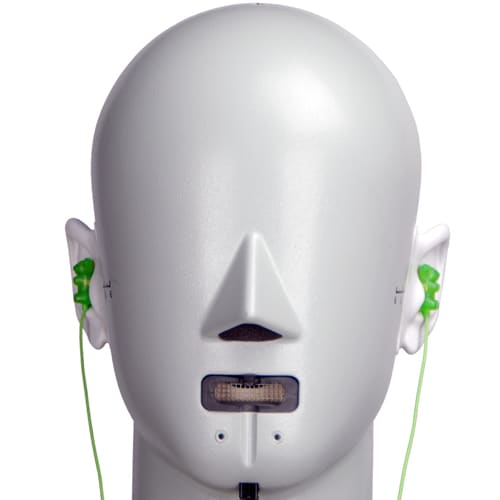
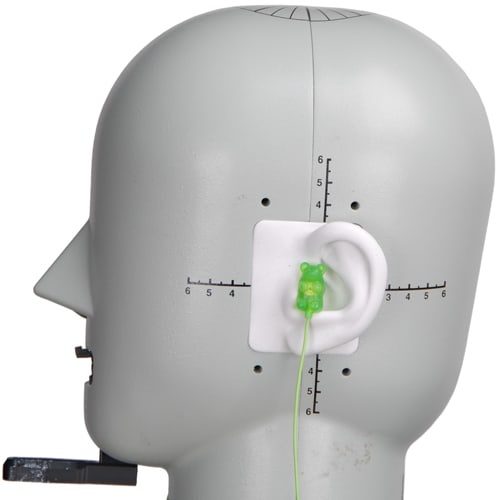
Speakers
{{section_header}}{{section.name}}{{/section_header}}
Beneath the Beyerdynamic DTX 300 ps' faux leather ear cups lie the speakers, guarded by plastic casing and a thin piece of lycra over the holes in the plastic casing.
Sides
{{section_header}}{{section.name}}{{/section_header}}
Back
{{section_header}}{{section.name}}{{/section_header}}
The no-nonsense design of the Beyerdynamic DTX 300 ps is apparent when looking at the sides of the headphones, featuring a red metallic outer-rim and a red Beyerdynamic logo set upon a black plastic case.
Band
{{section_header}}{{section.name}}{{/section_header}}
The metal band of the DTX 300 ps doesn't do much to catch the eye, but really, that's what no-frills design is all about.
Cable
{{section_header}}{{section.name}}{{/section_header}}
The cable is 3.93 feet long with absolutely no extras. While some might lament having no in-line controls or mic, keep in mind that this means the cable has less solder points, and therefore will be more robust.
The plug of the Beyerdynamic DTX 300 ps is a standard 1/8th inch, without much in the way of a cord guard.
There is no cord guard leading into the headphone itself, which is somewhat worrying if you're planning on swapping out cables.
Additional Features
{{section_header}}{{section.name}}{{/section_header}}
In the Box
{{section_header}}{{section.name}}{{/section_header}}
Included in the box with your Beyerdynamic DTX 300 ps is a carrying case. That's pretty much it.
Durability
{{section_header}}{{section.name}}{{/section_header}}
Like we previously mentioned, there aren't much in the way of cord guards, and in addition, the cable itself is a thin wire with not much insulation. Durability is a bit of a concern here.
Aesthetics
{{section_header}}{{section.name}}{{/section_header}}
For a pair of smaller super-light collapsible on-ears, the Beyerdynamic DTX 300 ps certainly aren't going to catch anybody's eye, but they're not ugly either.
Frequency Response
{{section_header}}{{section.name}}{{/section_header}}
Before we even hooked up our buddy HATS the testing robot, we noticed that the response of the Beyerdynamic DTX 300 ps was low. "Surely, this must just be something with the volume settings" we thought. After finding no problem with our equalizer and settings, we tested the frequency response of the Beyerdynamic DTX 300 ps and sure enough, the entire range of frequencies are somewhat muted: bass, treble, sibilant, you name it, it's quiet. The only range that is closer to ideal is the 700Hz-2kHz range, or where you'd find most natural speech sounds (outside of sibilants). This leads to voices being emphasized over other sounds, but nothing that will ruin your listening experience. Still, there is a wild fluctuation and then a precipitous drop beyond that range.

Click here for more information on our frequency response test.
Distortion
{{section_header}}{{section.name}}{{/section_header}}
The Beyerdynamic DTX 300 ps had some minimal issues with distortion along the lowest and highest end of the frequency spectrum, but none that will be audible to the listener. Really, we don't start to worry unless it reaches 3%, when it starts to become annoying. Still, audiophiles may notice the 1% distortion in the Beyerdynamic DTX 300 ps.
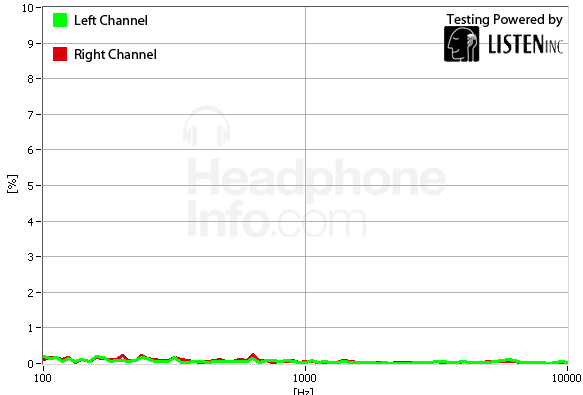
Click here for more information on our frequency response test.
Tracking
{{section_header}}{{section.name}}{{/section_header}}
The tracking for the Beyerdynamic DTX 300 ps wasn't really all that great, but it certainly isn't the worst we've seen. For one reason or another, they seem to favor the right channel for a long range of frequencies, before fluctuating greatly near the 10kHz mark.
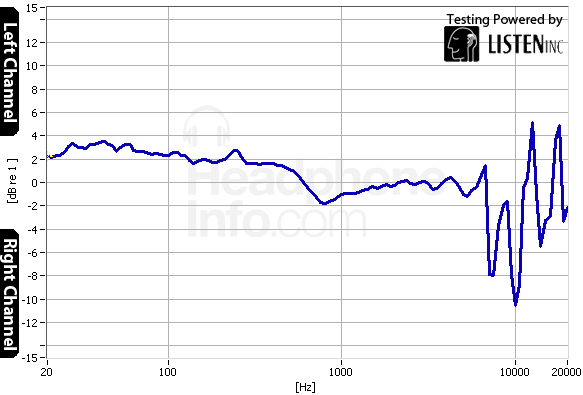
Click here for more information on our frequency response test.
Isolation
{{section_header}}{{section.name}}{{/section_header}}
Supra-aural headphones aren't typically all that great at isolation by design, and the Beyerdynamic DTX 300 ps were no different: they block out very little sound at all. You will notice that they do block out some of the higher-pitched sounds, so we will give credit where credit is due.

Click here for more information on our isolation test.
Leakage
{{section_header}}{{section.name}}{{/section_header}}
Surprisingly, the supra-aural Beyerdynamic DTX 300 ps corral their own sound very well. Because supra-aural headphones don't typically form a particularly good barrier to sound escaping, it's to be expected that people around you are going to hear what you're listening to at least a little bit. However, even if you crank the volume on these headphones, they won't allow much sound to escape.
Click here for more information on our leakage test.
Maximum Usable Volume
{{section_header}}{{section.name}}{{/section_header}}
The Beyerdynamic DTX 300 ps reached an output level of 120.73dB without recording a 3% distortion level. Needless to say, this is very impressive, even if you're probably never going to need a pair of headphones to accommodate this crazy level of volume. In fact, we strongly recommend that you never, ever push a pair of headphones or other sound equipment to 120dB because that's the level of sound that will start to give you permanent hearing loss or damage to your fragile inner-ear bits. We here at HeadphoneInfo.com know you love your music, so please don't jeopardize your hearing: there will be many more tunes in the future that you will want to hear.
Click here for more on our maximum usable volume test
Short-Term Use
{{section_header}}{{section.name}}{{/section_header}}
Before reading this section of the review, please understand that our listening experience can and often will be different from yours. Not only do we have differently-shaped heads than many of our readers, but our ears are also likely to be different, and for on-ear headphones that rest on the outside of your ears, that matters. Before buying headphones, make sure they fit you well before dropping a bunch of cash on them. Some headphones will fit better than others, and others will be more comfortable for different people. Shop wisely!
The Beyerdynamic DTX 300 p on-ears were extremely comfortable when we first put them on. Not only are they very light, but they rest ever so gently on the tops of your ears with their soft cushions. Take care not to accidentally get your hair caught in the metal band when you adjust them to your head, though, as that can get painful.

Extended Use
{{section_header}}{{section.name}}{{/section_header}}
We didn't notice much difference in our listening experience over the period of a few hours, unless you count forgetting you have them on. These are very comfortable on-ears. Chances are you won't notice any major comfort issues while listening to the Beyerdynamic DTX 300 ps for a long period of time.
Customizability
{{section_header}}{{section.name}}{{/section_header}}
There really aren't any customizability options for the Beyerdynamic DTX 300 ps worth noting, aside from being able to collapse the band. This feature is actually pretty nice, because it allows you to take your headphones out and about and store them easily in a bag or purse. The included travel pouch is a nice touch too, so you won't have to worry about damage to your headphones while porting them around in your carrying case of choice. Still, it is unlikely that you'll be able to store them in your pants pockets unless you're wearing those 90's style jeans that you could smuggle a battleship in.
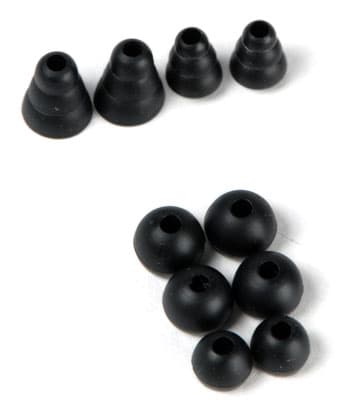
Cable Connectivity
{{section_header}}{{section.name}}{{/section_header}}
The Beyerdynamic DTX 300 ps have a standard cord length of 3.93 feet, which you'll find on a large portion of consumer headphones. It's clear that this is intended for a media player or source of media that's very close to you, but if you do want to listen to them at home without being chained to your immediate location, you'll have to buy an extension cable.
Portability
{{section_header}}{{section.name}}{{/section_header}}
The Beyerdynamic DTX 300 ps are relatively small on-ears, and they are very light and collapsible, so they can pretty much go anywhere you want to go. That being said, if you want to take your headphones out on the town for the morning commute on the subway, or for a jog, you're probably going to want in-ears. Not only are they much better at isolation by design, but they're infinitely easier to shove in your pocket than on-ears when you don't need them. If you really, really don't like in-ears, these headphones aren't a bad bet, but be aware that in-ears and on-ears have certain advantages and drawbacks that you'll have to consider before buying a pair of headphones.
Maintenance
{{section_header}}{{section.name}}{{/section_header}}
The Beyerdynamic DTX 300 ps don't come with any cleaning equipment, nor can you remove the ear cups around the speaker. It's a pain, but c'est la vie.
Design
{{section_header}}{{section.name}}{{/section_header}}
Both the Sony Triqiis and the Beyerdynamic DTX 300 ps are plainly-designed over-ears, but while the Triqiis' band is plain black plastic, the Beyerdynamics' band is brushed aluminum. There really is no contest here.
Frequency Response
{{section_header}}{{section.name}}{{/section_header}}
One of the Triqiis' big surprises is how well the frequency response measured, as they perform at a level much higher than that of other similarly-priced headphones. In this comparison, the somewhat-muted Beyerdynamic DTX 300 ps fall way short.
Distortion
{{section_header}}{{section.name}}{{/section_header}}
While the Triqiis provide better frequency response, the Beyerdynamic DTX 300 ps don't share their problem with grossly acute bass distortion, instead having a rather low, uniform level of distortion.
Tracking
{{section_header}}{{section.name}}{{/section_header}}
Overall, neither pair of headphones impress by our tracking metric, but it's plain to see that the Sony Triqiis provide a much more even tracking response over the full range of frequencies than the Beyerdynamic DTX 300 ps.
Isolation
{{section_header}}{{section.name}}{{/section_header}}
Though both headphones are sets of supra-aural (or on-ears if you prefer Germanic diction) headphones, they also corral their own sound fairly well, despite letting a bunch of it in.
Comfort
{{section_header}}{{section.name}}{{/section_header}}
To the credit of the Beyerdynamic DTX 300 ps, the soft faux leather and padding makes them very comfortable for a set of on-ear headphones. In stark contrast, the Triqiis don't offer much in the way of comfort, offering only stiff foam padding to comfort your ears. Needless to say, if you're looking for comfort, the DTX 300 ps are the way to go.
Verdict
{{section_header}}{{section.name}}{{/section_header}}
Both of these headphones hold distinct advantages over the other, and it will be up to you to decide what you value most in a set of headphones. If you want good frequency response, tracking and isolation, you shouldn't think twice about snagging a pair of Triqiis. If however you want a low-distortion listen with comfortable headphones that won't make you scream in agony after hours of listening time, spring for the Beyerdynamic DTX 300 ps.
Design
{{section_header}}{{section.name}}{{/section_header}}
Both the Sennheiser PXC 250-IIs and the Beyerdynamic DTX 300 ps are slick looking sets of on-ear headphones. Both are super light, and both have similar structures, but the Beyerdynamic DTX 300 ps can fold up into a much smaller unit than the Sennheisers can.
Frequency Response
{{section_header}}{{section.name}}{{/section_header}}
As you can see from the comparison charts below, the Sennheiser PXC 250-IIs provide a much more even, adequately loud frequency response. It also seems to have its channels more in-sync.
Distortion
{{section_header}}{{section.name}}{{/section_header}}
Though neither set of cans had an appreciable amount of distortion, if you want to split hairs the Sennheisers had less.
Tracking
{{section_header}}{{section.name}}{{/section_header}}
Though neither set of headphones were perfect with their tracking, the PXC 250-IIs have a more even response.
Isolation
{{section_header}}{{section.name}}{{/section_header}}
Given that the PXC 250-IIs have an active noise cancellation unit and closed metal backing to each speaker, it's natural that they're better at isolating you from the world by a longshot.
Comfort
{{section_header}}{{section.name}}{{/section_header}}
Both of these headphones are super-comfortable over a long period of time, even if it takes a little while to adjust. You really can't go wrong with either one here.
Verdict
{{section_header}}{{section.name}}{{/section_header}}
If sound quality and isolation are important to you, you may want to consider picking up the Sennheiser PXC 250-IIs instead of the Beyerdynamic DTX 300 ps, as they just blow them away in these areas. However, if this isn't worth the extra cash to you, the Beyerdynamic DTX 300 ps offer comfort, portability and affordability that isn't matched by the Sennheiser PXC 250-IIs.
Design
{{section_header}}{{section.name}}{{/section_header}}
Both sets of on-ear headphones are somewhat similar in design, but the Bose QuietComfort 3s do hold the edge on durability, as you can replace cables without too much hassle (assuming you can find a 2.5mm adapter or cable). If portability is more important to you, then be aware that the Beyerdynamic DTX 300 ps fold up and take up much less room than the QuietComfort 3s.
Frequency Response
{{section_header}}{{section.name}}{{/section_header}}
The Beyerdynamic DTX 300 ps certainly don't have the greatest frequency response, but they are certainly a fair bit better than the Bose QuietComfort 3s in this regard. Note that the QuietComforts have a massive falloff in frequency response at about the 2kHz mark. Simply put, anything higher-pitched than a snare drum or high tom will be very muted in relation to the rest of the sound. All you techno listeners would probably prefer to hear the typically higher-pitched melodies and effects that are common in that genre of music. Even though the Beyerdynamic DTX 300 ps have a muted response, at least it's even enough that if you turn up the volume a little bit you won't still lose audio quality.
Distortion
{{section_header}}{{section.name}}{{/section_header}}
One of areas that the QuietComfort 3s outshines the Beyerdynamic DTX 300 ps is in distortion. Are we making a big to-do about a minor difference? Yes, but for all you audiophiles out there, the Beyerdynamic DTX 300 ps will have a 1% distortion level in the highest and lowest frequencies, which you probably won't notice, but could depending on the sensitivity of your ears.
Tracking
{{section_header}}{{section.name}}{{/section_header}}
Once again, the Beyerdynamic DTX 300 ps are the victor in this matchup for supra-aural headphone supremacy, providing a mediocre tracking response, but still better than that of the Bose QuietComfort 3s.
Isolation
{{section_header}}{{section.name}}{{/section_header}}
Much like its cousins, the Bose QuietComfort 3s are actually pretty good in terms of isolation, if only because of their effective active noise-cancellation and closed backing. Still, that also means that they can only operate with a battery, which is a whole hassle in and of itself.
Comfort
{{section_header}}{{section.name}}{{/section_header}}
Both sets of cans are very comfortable, but there is one caveat to that assessment: the noise cancellation feature of the Bose QuietComfort 3s has been reported to cause discomfort problems while in use. Though we can't know for sure ahead of time that this will happen to you, try these out before you buy them if you have the opportunity.
The Beyerdynamic DTX 300 ps don't have active noise cancellation, so this is not a problem that they will give you. We feel like that alone gives the DTX 300 ps the edge in comfort.
Verdict
{{section_header}}{{section.name}}{{/section_header}}
As with most comparisons we offer, there are several advantages and disadvantages presented by each set of headphones, and these are no different: the Beyerdynamic DTX 300 ps are better overall in terms of frequency response, tracking, portability, ease of use and comfort. However, to Bose's credit, their QuietComfort 3s do a good job of isolation and minimizing audio distortion. If you're willing to shell out the extra cash and deal with requiring batteries to listen for those features, you might prefer the QuietComfort 3s.
Design
{{section_header}}{{section.name}}{{/section_header}}
As the Panasonic Technics RP-HD1200 are over-ears and not on-ears, they will provide different advantages and disadvantages in relation to the Beyerdynamic DTX 300 ps inherent in their design. For starters, they're much larger and not collapsible, but they have much beefier cord guards and durable casings. Really, it's up to you what you are looking for in a set of headphones, but be aware that different styles will have different drawbacks.
Frequency Response
{{section_header}}{{section.name}}{{/section_header}}
Not only do the RP-HD1200s provide a better, more even frequency response over a larger frequency range than the Beyerdynamic DTX 300 ps, but they also have closer response between the two channels than the DTX 300 ps.
Distortion
{{section_header}}{{section.name}}{{/section_header}}
Neither set of headphones had any major issues with distortion, but the RP-HD1200s had less.
Tracking
{{section_header}}{{section.name}}{{/section_header}}
Both sets of headphones come with their own tracking problems; the Beyerdynamic DTX 300 ps with their abrupt erratic tracking in the 5kHz range, and the RP-HD1200s with their favor to the right channel. Still, they aren't horrible responses, but they're not exactly good either.
Isolation
{{section_header}}{{section.name}}{{/section_header}}
Neither set of headphones isolate the listener form outside noise very well, but the RP-HD1200s block out a lot more of the super-high frequencies than the DTX 300 ps.
Comfort
{{section_header}}{{section.name}}{{/section_header}}
Unlike many of the previous comparisons, there is a clear winner in the comfort battle, as the RP-HD1200s don't even hold a candle to how good the Beyerdynamic DTX 300 ps feel while listening. The DTX 300 ps feel comfortable from the start of each listening session, and stay that way, while there are several problems with the design of the RP-HD1200s in relation to listener comfort, notably gripping your head too tightly and being very heavy for a set of cans.
Verdict
{{section_header}}{{section.name}}{{/section_header}}
Each set of headphones have their advantages and disadvantages, but the on-ear Beyerdynamic DTX 300 ps hold the edge in comfort and portability, while the RP-HD1200s outperform the Beyerdynamic DTX 300 ps in frequency response and durability. Depending on what qualities are most important to you in a set of headphones, you may pick one over the other, but the strong discomfort associated with RP-HD1200 use may be enough to convince you to look elsewhere.
Conclusion
{{section_header}}{{section.name}}{{/section_header}}
The Beyerdynamic DTX 300 ps are a decent pair of entry-level on-ears that are ultra-portable (for on-ears) and slick-looking. Though they won't dazzle you with their audio performance and they mute total volume a bit, they are not a bad bet for someone who places comfort as their first priority when listening to audio media. These headphones aren't the greatest you'll ever buy, but their pricetag and their long-term comfort will make these headphones a good buy for the consumer that doesn't need an overly-fancy pair for studio work. Ultimately the choice is yours when it comes to what you want in a pair of headphones you buy, but these are not the headphones you are looking for if pure audio quality and performance are your chief concerns.
Meet the tester
A seasoned writer and professional photographer, Chris reviews cameras, headphones, smartphones, laptops, and lenses. Educated in Political Science and Linguistics, Chris can often be found building a robot army, snowboarding, or getting ink.
Checking our work.
Our team is here to help you buy the best stuff and love what you own. Our writers, editors, and experts obsess over the products we cover to make sure you're confident and satisfied. Have a different opinion about something we recommend? Email us and we'll compare notes.
Shoot us an email